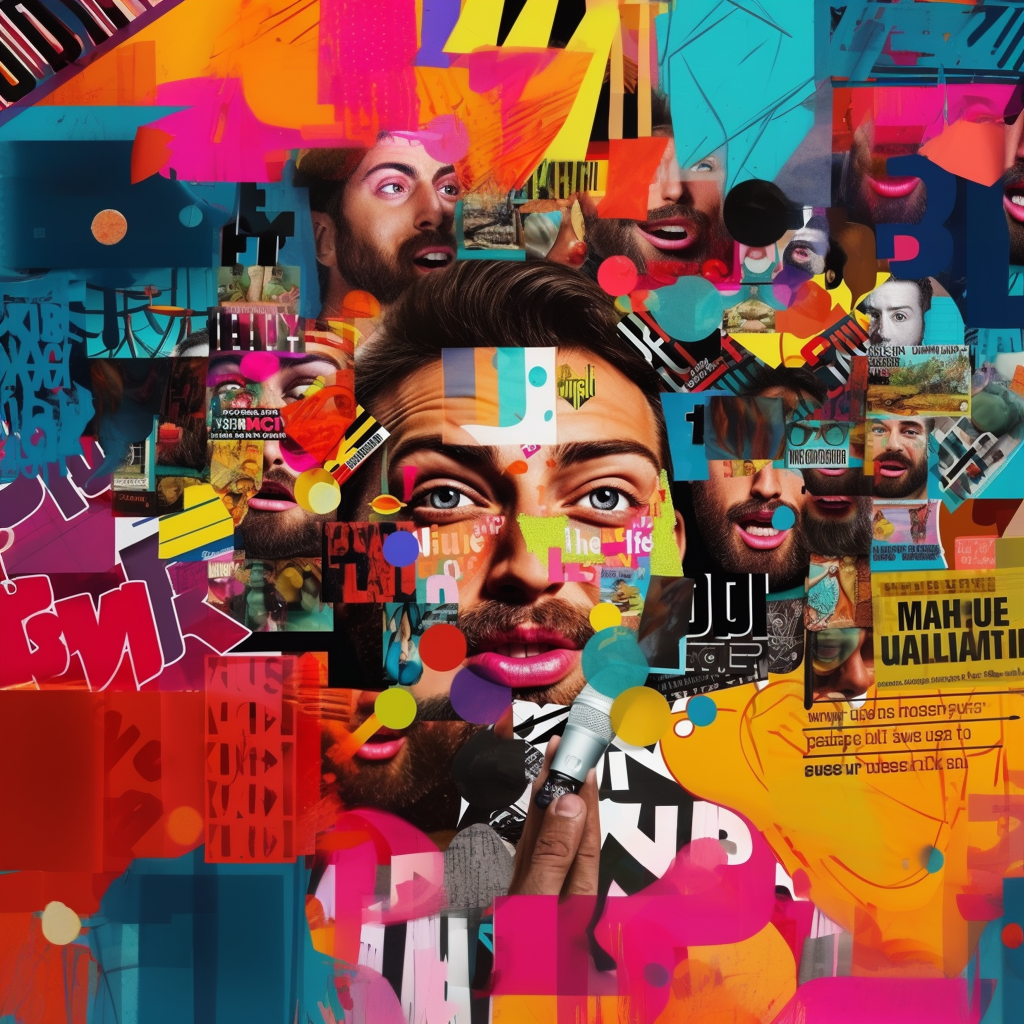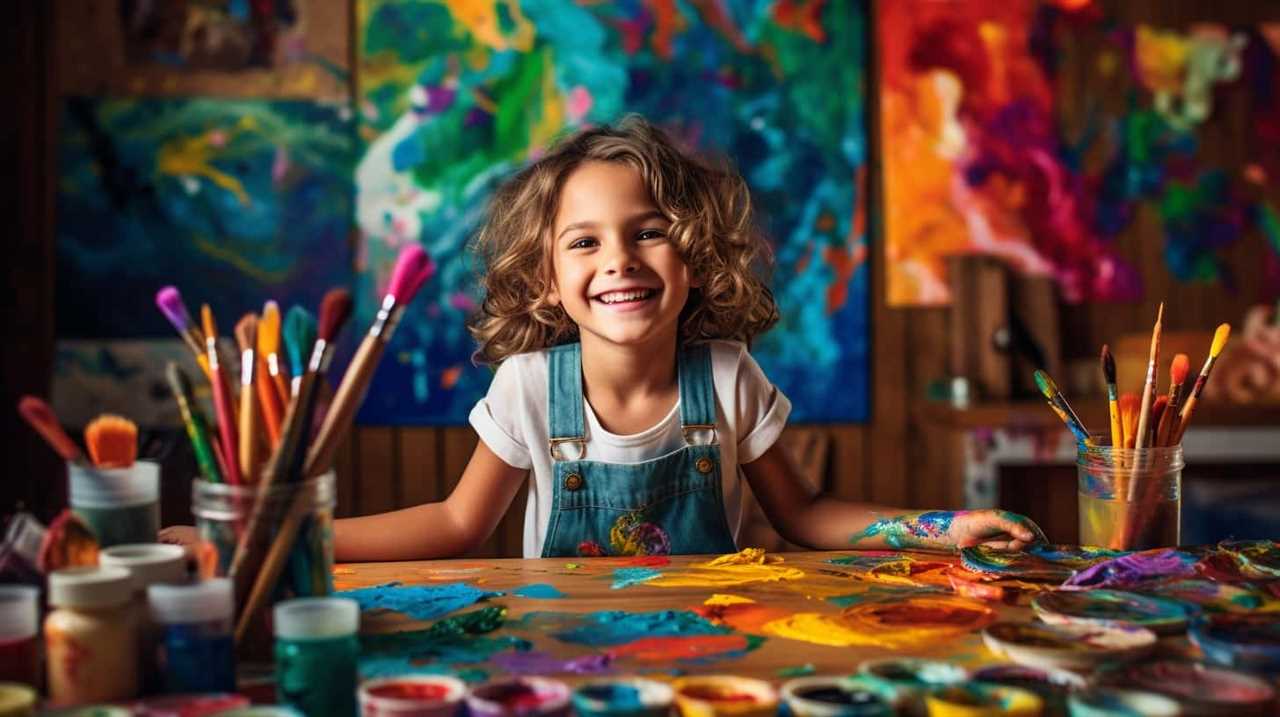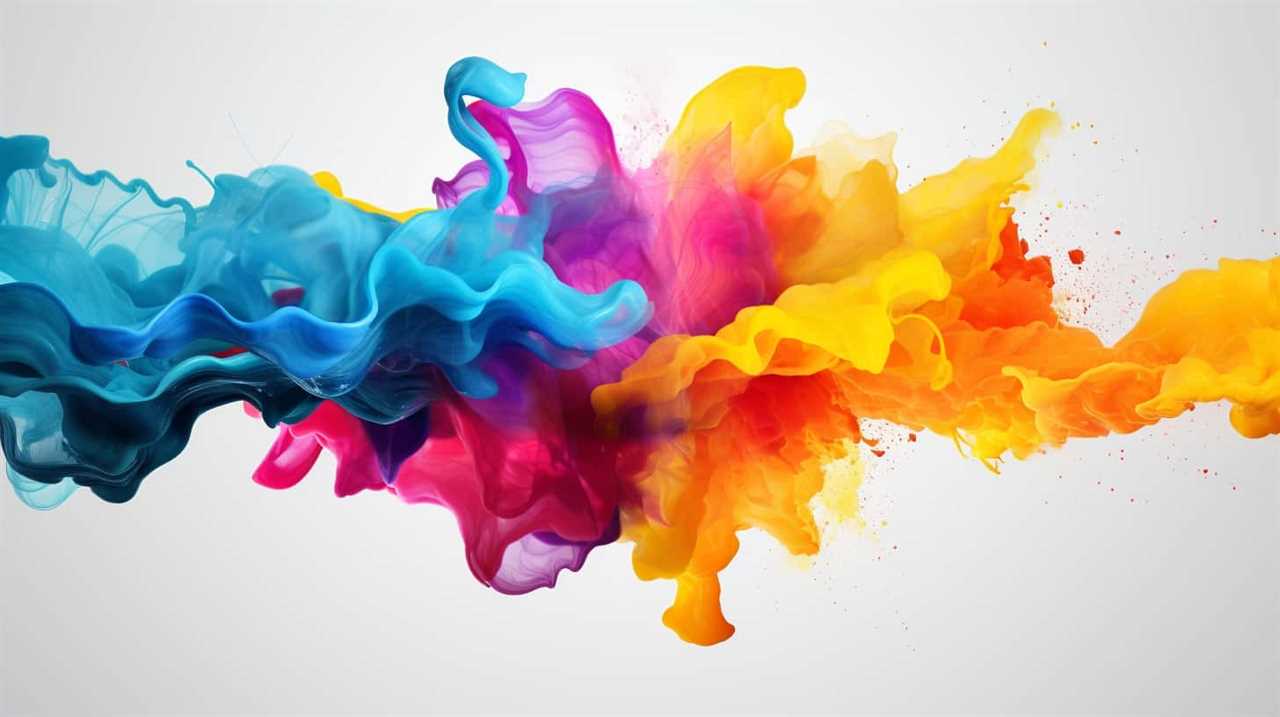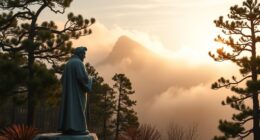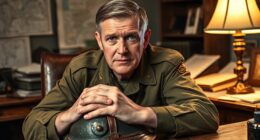What makes a work of art truly beautiful is something that you ever thought about?
It’s like finding a hidden gem in a vintage record store, a timeless treasure that stands out from the crowd.
In the realm of creative expression, the concept of beauty is a fascinating journey into innovation and originality.
It’s not just about pretty landscapes and perfect symmetry, but about pushing boundaries and challenging the norms.
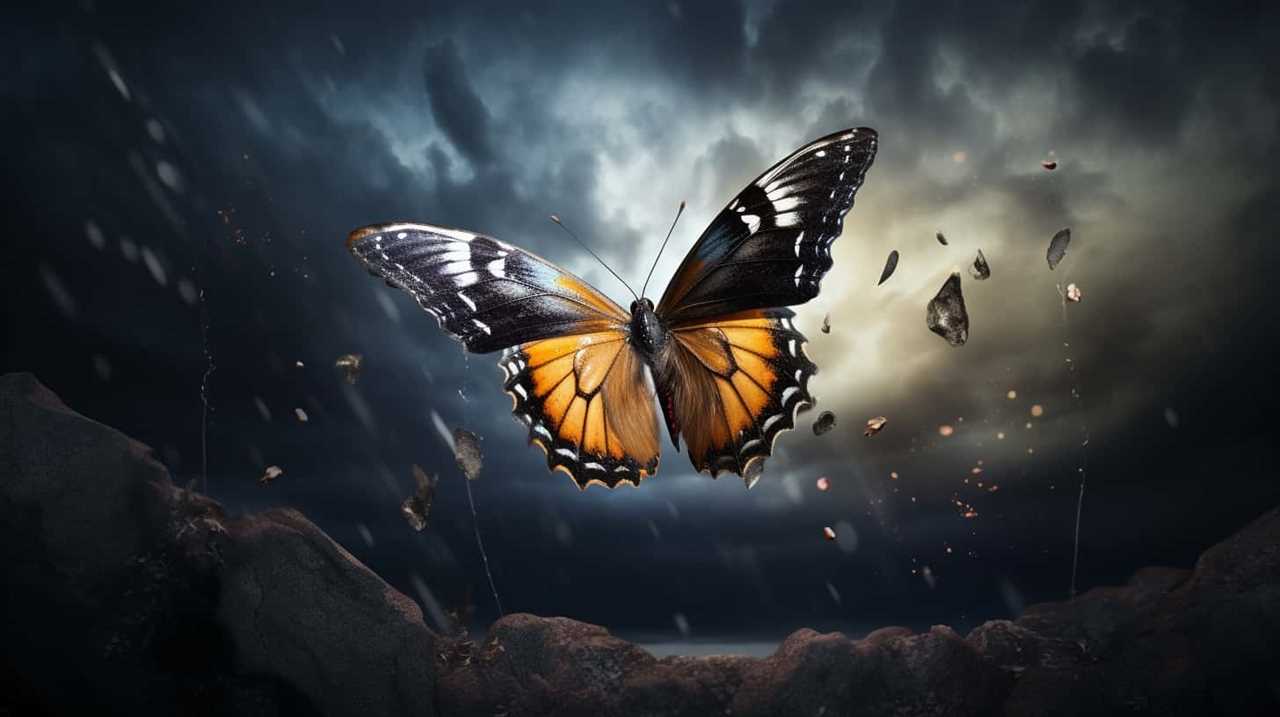
From the brushstrokes on a canvas to the notes in a symphony, beauty in art is subjective yet powerful.
It’s a dance between perception and emotion, influenced by culture and shaped by the interplay of form and expression.
Join us as we delve into the depths of artistic beauty and explore what truly defines it.
Key Takeaways
- Beauty in creative expression goes beyond aesthetics and challenges the norms.
- Symbols and imagination are powerful tools for conveying beauty in art.
- Aesthetics, such as composition, color, and texture, greatly impact the artistic appeal.
- Art appreciation is subjective and influenced by personal interpretation and perception.
The Concept of Beauty in Art
When it comes to appreciating art, you can’t deny the significance of the concept of beauty. In the realm of art, beauty isn’t merely about aesthetics or pleasing the eye; it’s a deeper exploration of symbolism and the power of imagination. Beauty in art goes beyond surface-level appeal, inviting the viewer to delve into the artist’s world and uncover hidden meanings.
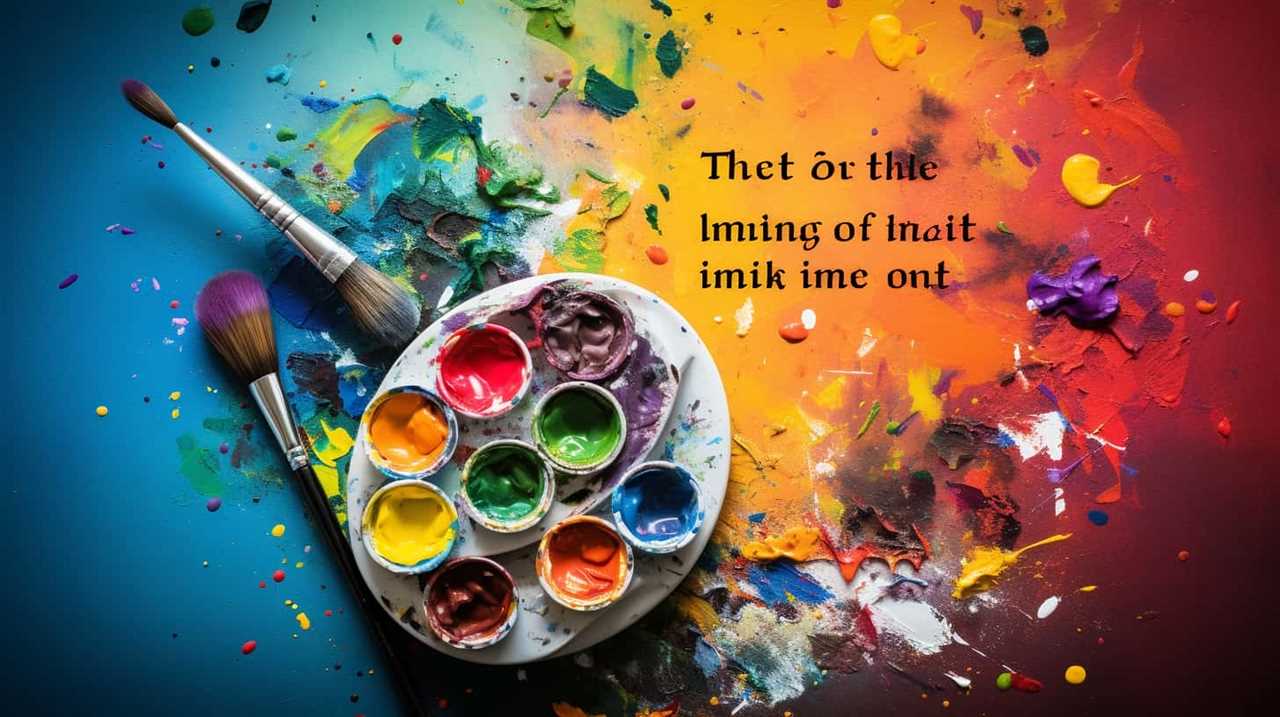
Artists use various techniques to convey beauty in their work. They employ symbolism to evoke emotions and provoke thoughts in the viewer. Through the use of symbols, artists can express complex ideas and concepts that may be difficult to convey through words alone. Symbols have the power to transcend language barriers and ignite the imagination, allowing for a more profound connection between the artist and the audience.
Furthermore, beauty in art is closely tied to the power of imagination. Artists have the ability to transport us to new worlds, challenge our perceptions, and expand our understanding of the human experience. Through their imaginative creations, artists can inspire innovation and push the boundaries of what’s considered beautiful. They encourage us to question the status quo and explore new possibilities.
Exploring Aesthetics in Creative Expression
To truly appreciate creative expression, you must delve into the realm of aesthetics and explore the visual elements that make a piece of art beautiful. Aesthetic preferences play a significant role in how we interpret and appreciate art. Here are three key aspects to consider when exploring aesthetics in creative expression:
- Composition: The way the various elements of a piece of art are arranged can greatly impact its aesthetic appeal. Whether it’s the balance of shapes and colors or the placement of objects within the frame, composition influences how we perceive and connect with the artwork.
- Color palette: The choice and combination of colors can evoke different emotions and moods. Artists often use color to create harmony, contrast, or to convey specific meanings. Understanding the impact of color in art can deepen our appreciation for the artist’s intent.
- Texture: The tactile quality of a piece of art can add depth and visual interest. From smooth, polished surfaces to rough, textured brushstrokes, the use of different textures can enhance the overall aesthetic experience.
By exploring these visual elements, we gain insights into the artist’s aesthetic preferences and artistic interpretation. Understanding the choices they made can help us appreciate the beauty of their expression on a deeper level.

Now, let’s delve into the role of perception in art appreciation.
The Role of Perception in Art Appreciation
Delving into the realm of perception allows you to understand how your own interpretation and perspective shape your appreciation of art. When it comes to art appreciation, the role of interpretation is crucial. Each individual brings their own unique set of experiences, beliefs, and cultural background to the table, which inevitably influence how they perceive and understand a piece of art.
Interpretation plays a key role in art appreciation because it determines the meaning we assign to the artwork. Different individuals may interpret the same artwork in diverse ways, based on their personal preferences and biases. For example, one person may see a painting as a representation of sadness, while another may interpret it as a symbol of hope. These individual preferences shape our understanding and appreciation of art, as they determine the emotions and messages we derive from it.
Understanding the role of interpretation in art appreciation is essential for recognizing the subjectivity of art beauty. By acknowledging that our perception of art is influenced by our own interpretation and preferences, we can begin to appreciate the wide range of perspectives that exist. This realization allows us to embrace the diversity of artistic expressions and engage in meaningful conversations about the beauty and significance of different artworks.

Understanding the Subjectivity of Art Beauty
Understanding the subjectivity of art beauty allows you to appreciate the diverse perspectives and interpretations that contribute to the appreciation of creative expression. Art isn’t a fixed entity, but rather a subjective experience that varies from person to person.
Here are three key points to consider when exploring the subjectivity of art beauty:
- Interpretation: Art invites us to delve into our own thoughts and emotions, encouraging us to interpret the work in our own unique way. Each person brings their own background, experiences, and cultural influences to the table, shaping their understanding and appreciation of the artwork. This subjective interpretation adds depth and richness to the overall artistic experience.
- Context: Art is deeply intertwined with the context in which it’s created. Understanding the historical, social, and cultural context of the artwork provides insights into the artist’s intentions and the larger narrative it seeks to convey. This contextual understanding further highlights the subjectivity of art beauty, as it allows us to appreciate the layers of meaning embedded within the artwork.
- Personal Preferences: Art beauty is ultimately a matter of personal preference. Each individual has their own unique tastes and preferences, influenced by their own aesthetic sensibilities. What one person finds beautiful, another may not. This diversity of preferences adds to the richness of the artistic landscape and emphasizes the subjectivity of art beauty.
Emotions and Beauty in Artistic Expression
Explore the profound connection between emotions and beauty in artistic expression. Emotions and aesthetics have long been intertwined, with artists using their work as a means to convey and evoke powerful feelings. The beauty in artistic expression lies not only in the technical skill and visual appeal but also in the ability to elicit an emotional response from the viewer.
Artistic expression and psychology intersect when considering the impact of emotions on the creation and interpretation of art. Artists often draw on their own emotions and experiences to infuse their work with depth and meaning. This emotional connection can be seen in the use of color, composition, and subject matter, all of which contribute to the overall aesthetic appeal of a piece.

The study of emotions and aesthetics has revealed that certain emotions, such as joy or sadness, can be universally recognized and appreciated in art. This suggests that there’s a shared understanding of beauty that transcends cultural boundaries.
Furthermore, the experience of viewing art can also evoke emotions in the viewer. The emotional response to art is subjective and can vary from person to person, but it’s this emotional engagement that adds another layer to the beauty of artistic expression.
The Influence of Culture on Artistic Beauty
Culture plays a significant role in shaping the perception of artistic beauty. The influence of fashion and the impact of technology are two major factors that contribute to this shaping process.
- Fashion: Fashion trends not only influence the way people dress but also impact the way they perceive art. The ever-changing nature of fashion introduces new aesthetics and styles, which in turn affect the perception of artistic beauty. For example, in the 1960s, the pop art movement emerged alongside the rise of bold and vibrant fashion trends. This cultural synergy influenced artists to create vibrant and eye-catching artworks that aligned with the fashion of the time.
- Technology: The advancement of technology has revolutionized the way art is created and consumed. With the advent of digital tools and platforms, artists have gained new avenues for expression and experimentation. This has expanded the possibilities of artistic beauty, allowing for the exploration of new mediums and techniques. Additionally, technology has also influenced the way art is consumed, with digital galleries and online platforms enabling a wider audience to access and appreciate art from different cultures.
The influence of culture on artistic beauty is a dynamic and ever-evolving process. As fashion trends come and go and technology continues to advance, our perception of artistic beauty will undoubtedly be shaped by these cultural factors. Embracing this influence allows for a constant reimagining and redefinition of what’s considered beautiful in artistic expression.
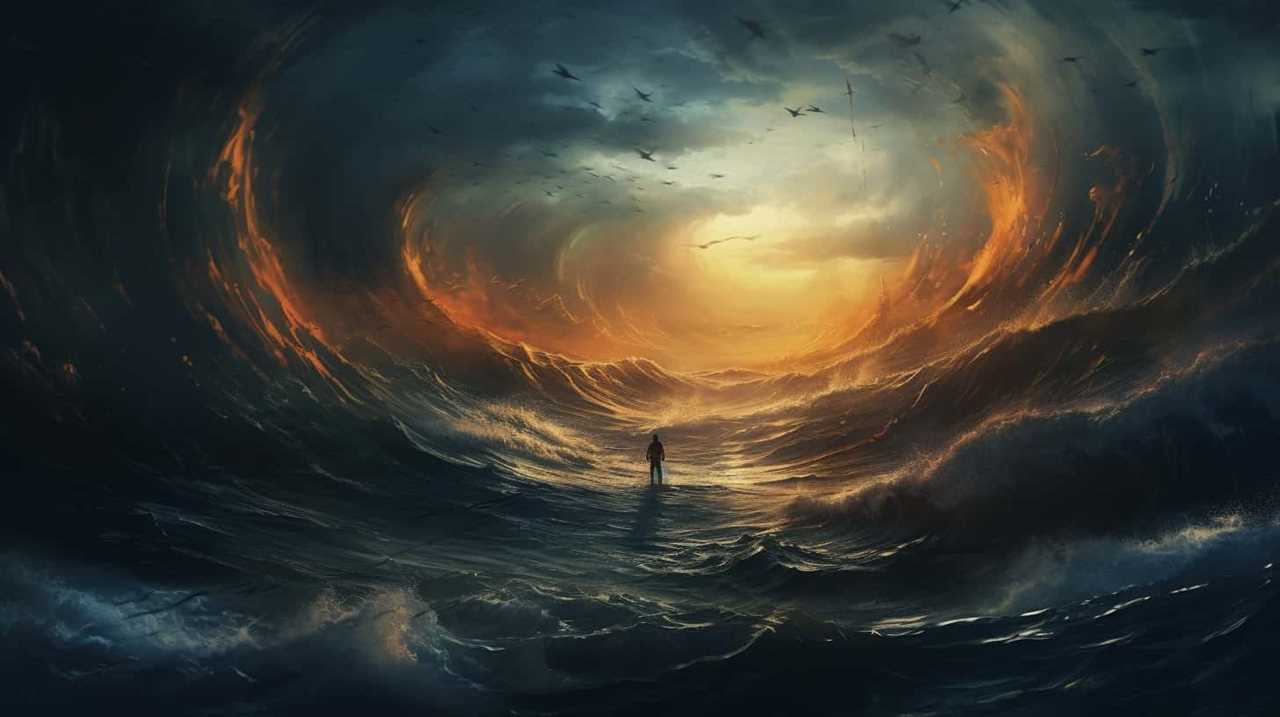
The Interplay Between Form and Beauty in Art
When it comes to the interplay between form and beauty in art, one of the key questions that arises is the role of abstract art. Abstract art challenges traditional notions of form, often prioritizing expressive and emotional qualities over representational accuracy.
This raises the question of whether beauty in abstract art lies in the form itself or in its aesthetic appeal. By exploring this dynamic, we can gain a deeper understanding of how form and beauty intersect in art.
Beauty in Abstract Art
Abstract art captivates you with its interplay of form and beauty. It challenges traditional notions of representation and invites you to explore the depths of your own imagination. In the realm of abstract art, beauty takes on a unique form, transcending the boundaries of the physical world.
Here are three aspects that highlight the beauty of abstract art:
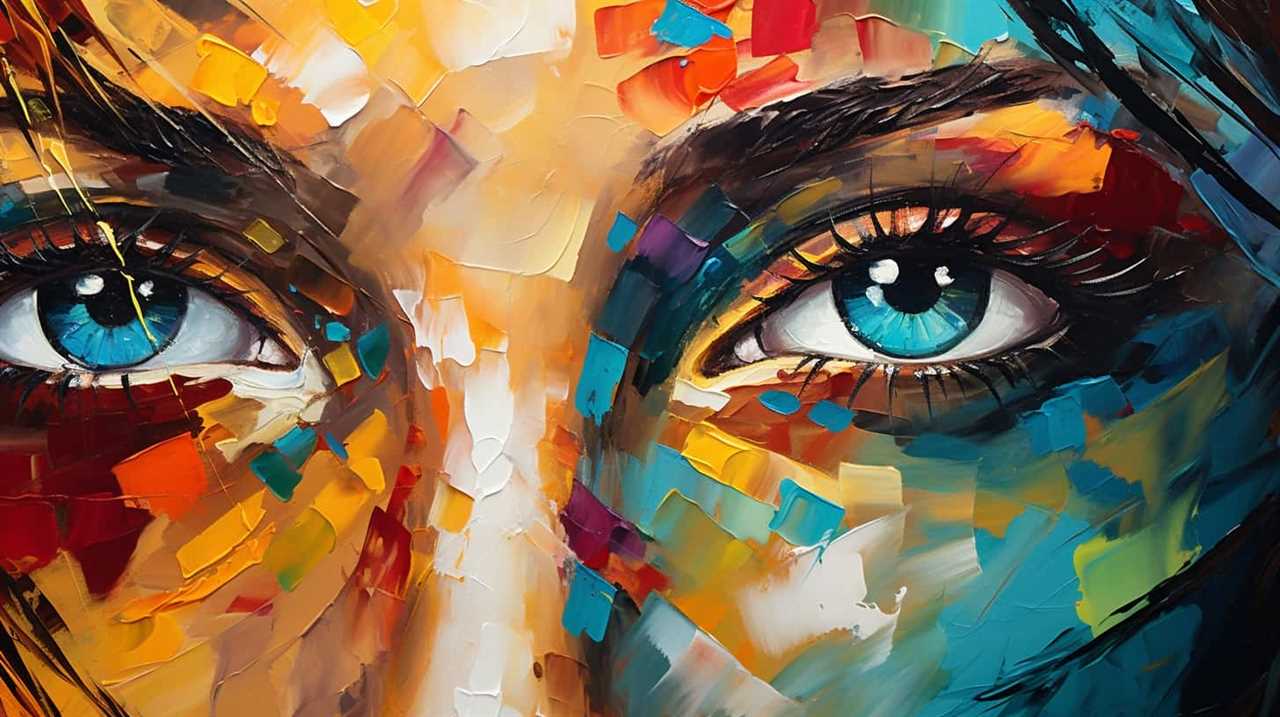
- Beauty in Minimalism: Abstract art often uses minimalistic techniques to convey profound emotions and ideas. The simplicity of form and use of negative space create a sense of balance and harmony, allowing the viewer to appreciate the beauty in the absence of excessive elements.
- Beauty in Mixed Media: Abstract art embraces experimentation and the combination of various materials and mediums. The interplay between different textures, colors, and techniques adds depth and complexity to the artwork, creating a visually captivating experience.
- Beauty in Interpretation: Abstract art encourages individual interpretation, allowing each viewer to find personal meaning and beauty in the artwork. The freedom to explore and connect with the artwork on a subjective level is what makes abstract art so engaging and thought-provoking.
Abstract art invites you to see beyond the surface and appreciate the beauty that lies within the interplay of form, minimalism, mixed media, and interpretation. It challenges the status quo and opens up new possibilities for creative expression.
Form Vs. Aesthetic Appeal?
To fully appreciate the interplay between form and beauty in art, it’s essential to recognize the inherent subjective nature of aesthetic appeal.
While form refers to the physical aspects of a work, such as lines, shapes, and composition, aesthetic appeal encompasses the emotional impact and overall attractiveness of the piece.
When considering the relationship between form and aesthetic appeal, it becomes clear that they’re closely intertwined. The form of a piece can greatly influence its aesthetic appeal, as the arrangement of elements can evoke specific emotions and create visual harmony.
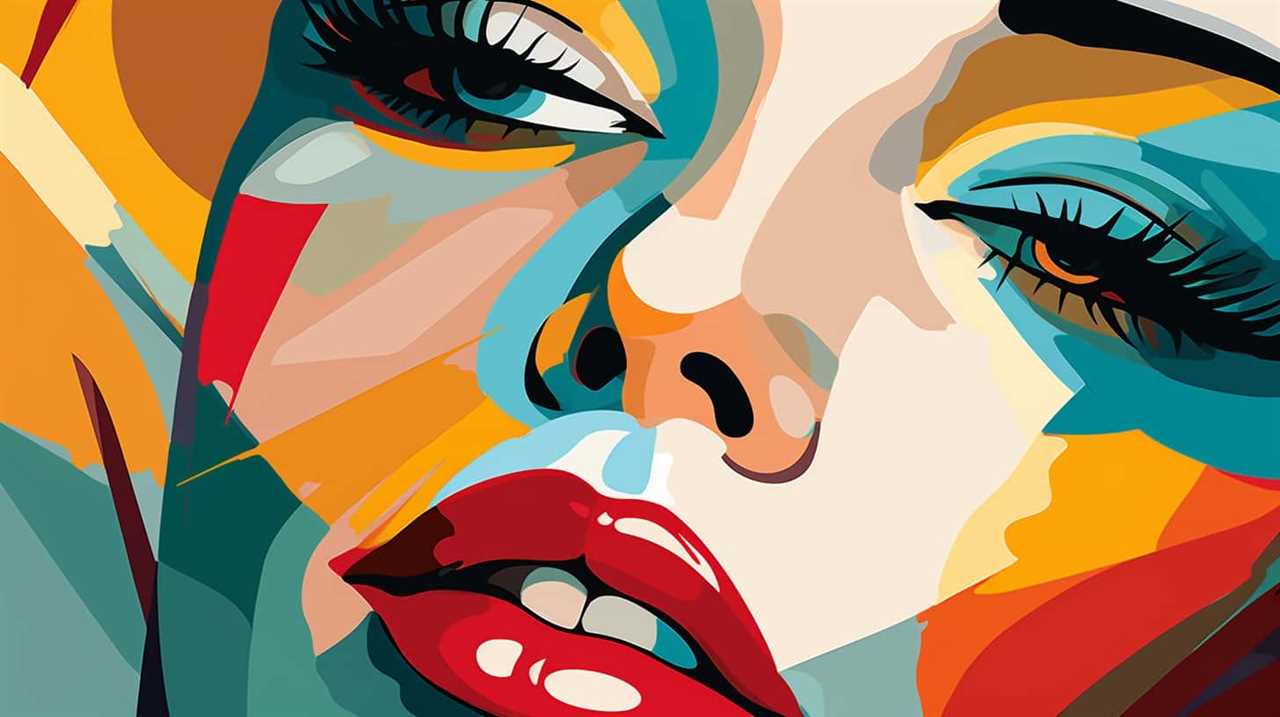
Additionally, the evolution of beauty further highlights the connection between form and aesthetic appeal. As societal standards and artistic movements change over time, the perception of beauty also evolves, leading to a constant reevaluation of how form and aesthetic appeal interact in art.
Examining the Timelessness of Artistic Beauty
When it comes to artistic beauty, one can’t ignore its eternal allure. Throughout history, there have been countless examples of art that has transcended time and continues to captivate audiences today.
From the exquisite sculptures of ancient Greece to the masterpieces of the Renaissance, beauty has proven to be a universal language that speaks to the human soul across different eras and cultures.
The ability of art to evoke emotions and resonate with individuals throughout the ages is a testament to its enduring power and timeless appeal.
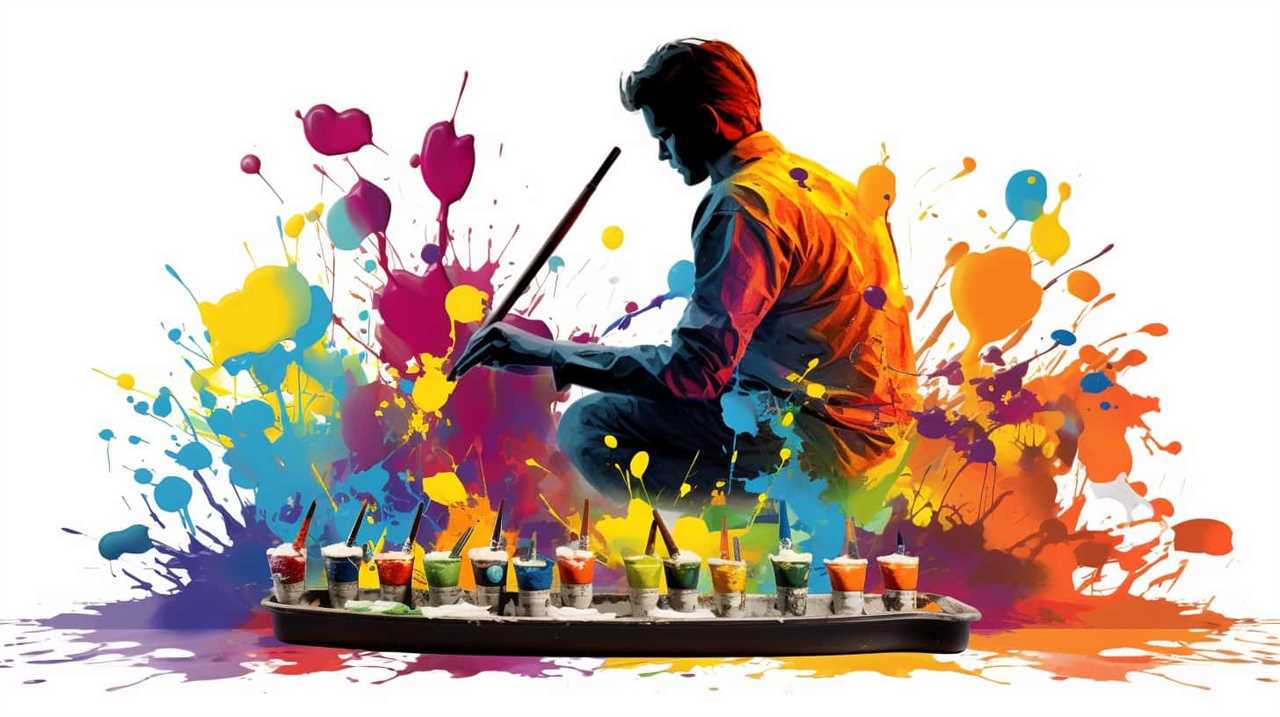
Eternal Allure of Art
You can explore the timeless allure of art by delving into the enduring beauty found within creative expressions. Art has the power to captivate and inspire, transcending the boundaries of time. Here are three reasons why art’s allure remains eternal:
- The power of symbolism: Art has the ability to convey complex ideas and emotions through symbolic imagery. Whether it’s a simple brushstroke or a carefully constructed composition, symbolism adds depth and meaning to artistic expressions, making them resonate with viewers on a profound level.
- The impact of color: Color has the remarkable ability to evoke emotions and create a sense of atmosphere. Artists skillfully use color palettes to convey different moods and create visual harmony, drawing the viewer into their world and leaving a lasting impression.
- The universality of artistic language: Art is a language that transcends cultural boundaries. It speaks to our shared human experiences and emotions, allowing us to connect with artworks from different times and places.
Beauty Across Time
One can appreciate the timelessness of artistic beauty by examining its enduring allure across different eras.
Beauty standards and the concept of what’s considered beautiful have evolved over time, yet there are certain aspects of beauty that transcend these changes.
Throughout history, artists have depicted beauty in various forms, from the graceful figures of ancient Greek sculptures to the realistic portraits of Renaissance painters.

The evolution of beauty can be seen in the shifting ideals of different cultures and societies, reflecting changing values and perceptions.
However, despite these variations, certain elements of beauty remain constant, such as symmetry, proportion, and harmony.
Artistic beauty continues to captivate and inspire, transcending time and connecting us to the universal human experience of appreciating the aesthetics of the world around us.
Frequently Asked Questions
How Does the Concept of Beauty in Art Differ Across Different Cultures?
Cultural influences shape artistic preferences, leading to a diverse understanding of beauty in art. Different cultures perceive beauty through their unique lenses, appreciating various elements like color, composition, and symbolism. This diversity enriches the world of creative expression.
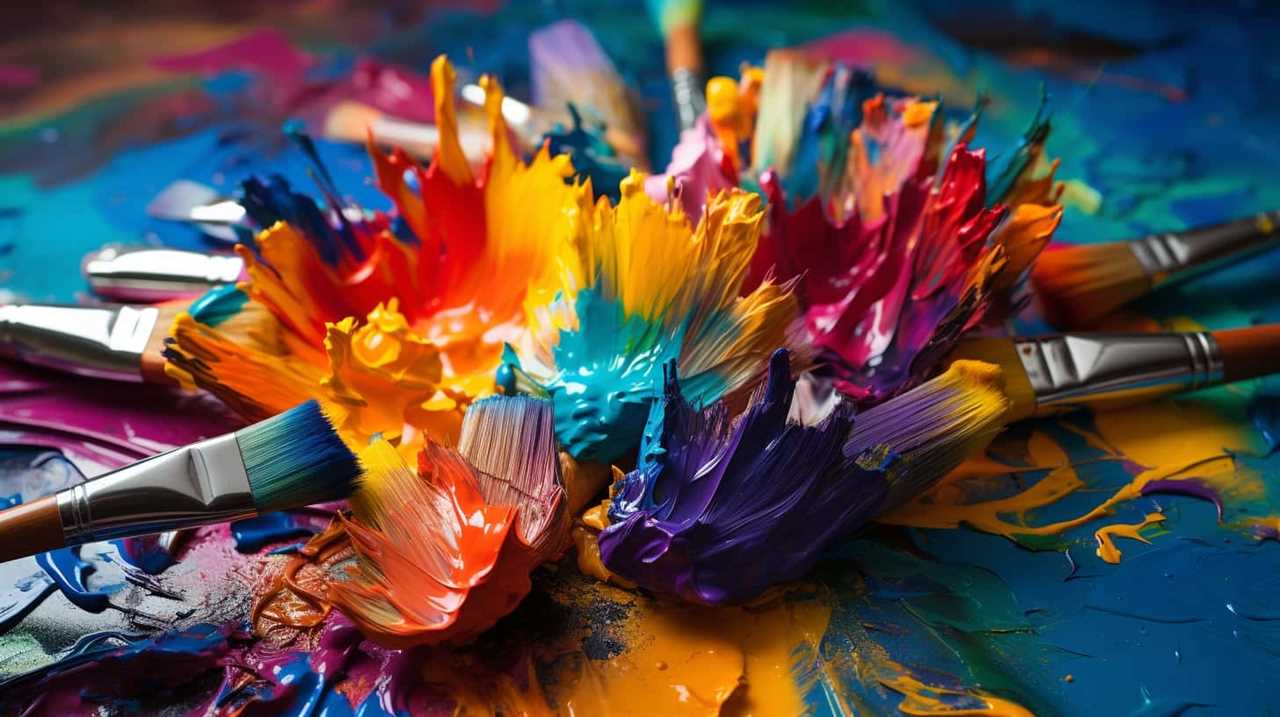
What Role Do Emotions Play in the Perception and Appreciation of Beauty in Artistic Expression?
Emotions have a pivotal part in perceiving and appreciating beauty in art. They intensify the role of imagination, allowing one to connect with the artist’s intent. Cultural influences shape emotions, making beauty subjective yet universally felt.
How Does the Interplay Between Form and Beauty Contribute to the Overall Impact of a Piece of Art?
The interplay between form and beauty creates a visual impact that enhances the overall aesthetic appeal of a piece of art. It adds depth and dimension, captivating the viewer and making the artwork truly impactful.
Can the Subjectivity of Art Beauty Be Objectively Measured or Defined?
You can’t objectively measure the subjectivity of art beauty, but you can attempt to define it. Through analysis and exploration, you can uncover the various elements that contribute to the perception of beauty in creative expression.
Does the Perception of Beauty in Art Change Over Time, and if So, Why?
The perception of beauty in art evolves over time due to societal influences. As culture shifts, so does our appreciation for different forms of creative expression. Understanding this evolution is crucial for innovative and insightful artistic exploration.
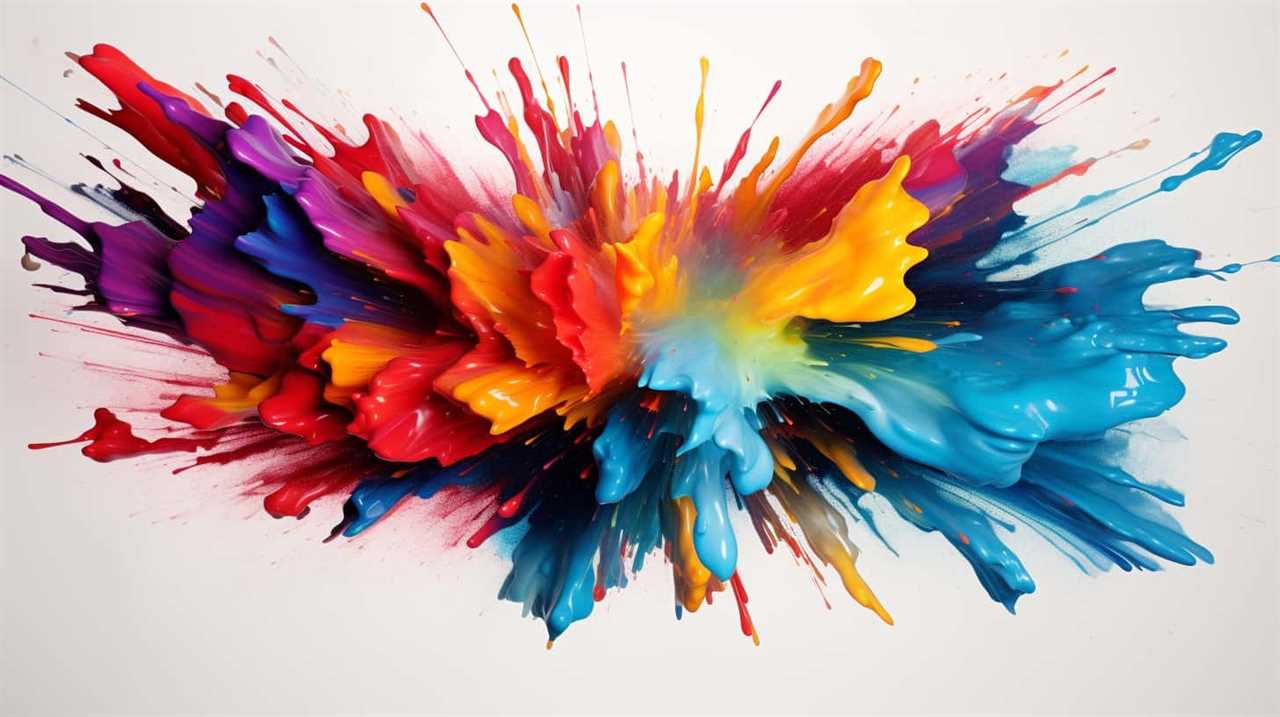
How Does Aesthetic Beauty in Art Influence the Definition of Beauty in Creative Expression?
Aesthetic beauty in art plays a significant role in shaping the definition of beauty in creative expression. The way artistic elements such as color, form, and composition are utilized can impact how beauty is perceived and interpreted. These elements contribute to the overall aesthetic appeal and emotional impact of the artwork.
Conclusion
You have journeyed through the vast realm of beauty in creative expression, unraveling its complexities and unveiling its enigmatic allure. Like a skilled painter, you have expertly blended the colors of aesthetics, perception, subjectivity, emotions, culture, and form to create a masterpiece of understanding.
As you step back and admire your creation, you realize that beauty in art transcends time and space, forever captivating the hearts and minds of those who dare to venture into its mesmerizing depths.
Fritz is a writer whose humor and wit infuse life into words. His creativity, combined with a profound love for the English language, makes him a unique voice at afterQuotes. Fritz’s engagement with books, culture, and social media adds depth to his contributions, making them resonate with our diverse audience.


